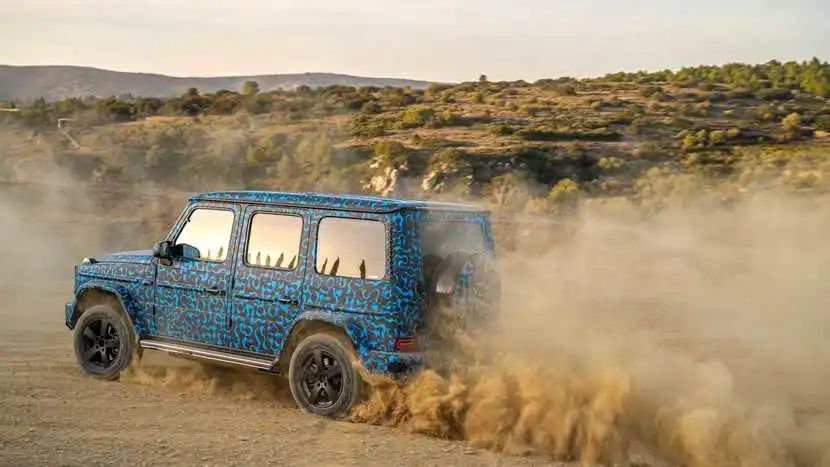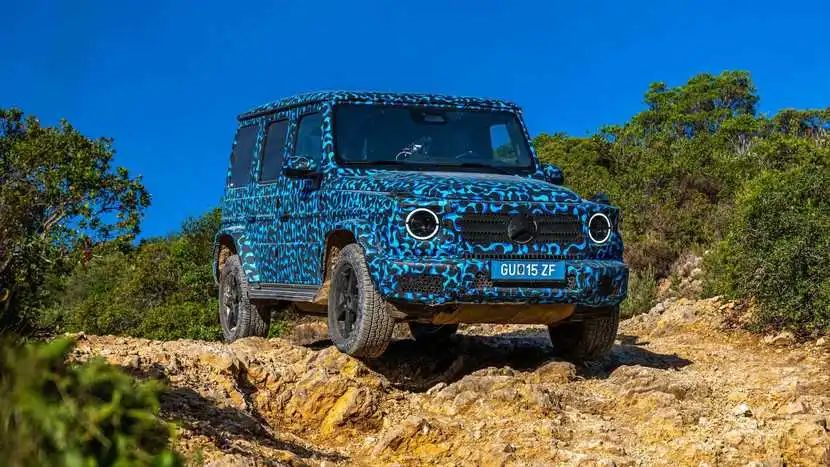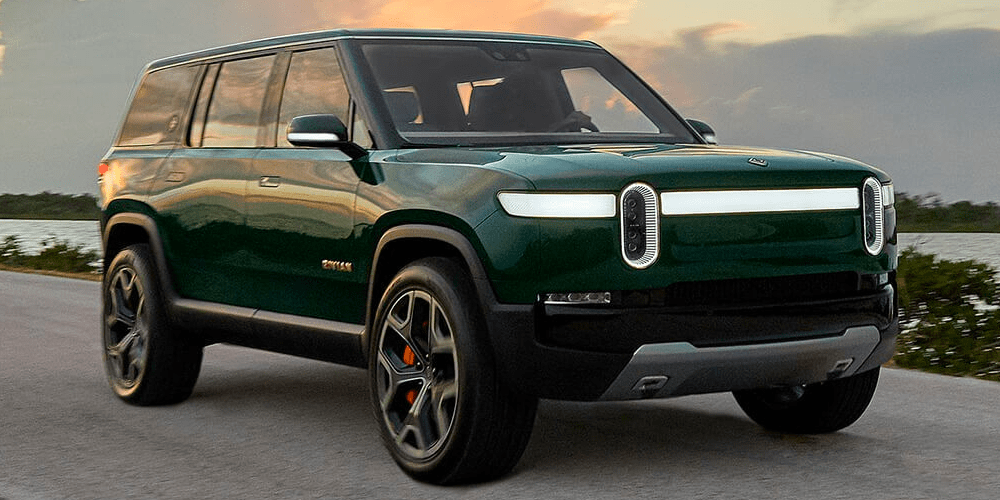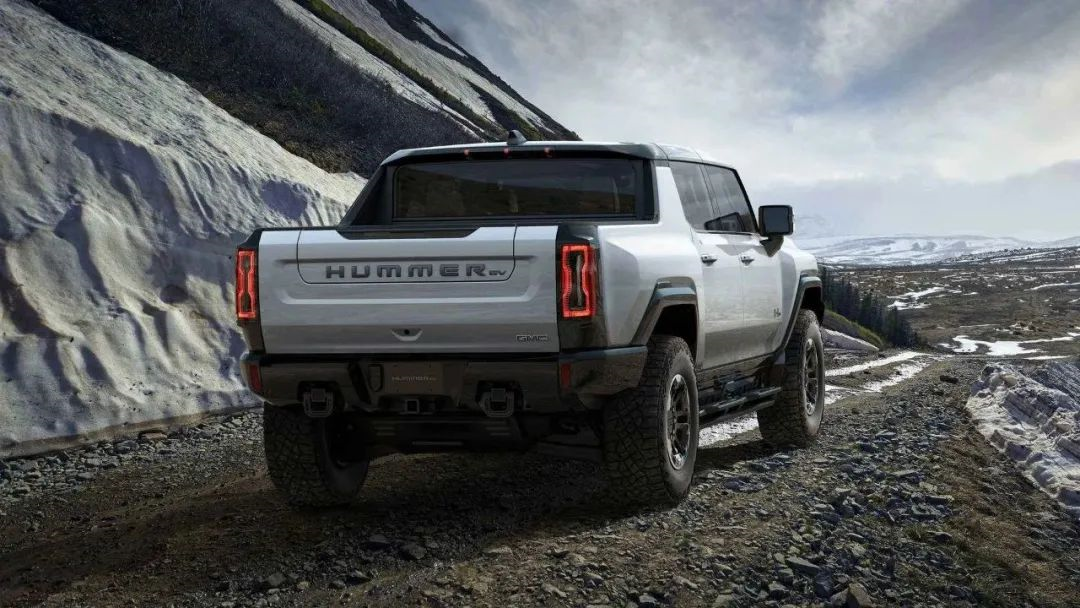Author: Rezz
This is the electric off-road vehicle I drove when I was a child: it takes 20 seconds to accelerate and has a range of 20km.

And this is the electric off-road vehicle Mercedes is currently developing: it accelerates in 4 seconds and has a range of 650km.

Kids, do you have a lot of questions? What ignited the passion in car manufacturers’ hearts to turn childhood electric off-road vehicles into mass-produced reality after 25 years?
Why is the off-road vehicle, which is not suitable for Chinese situation, so popular?
If most people driving off-road vehicles are greasy middle-aged men who want to conceal their lost edges and lines with a tough guy appearance of an off-road vehicle, the electronic music played in the intelligent cockpit in the car has already betrayed their souls. In the future, it will be the world of electric off-road vehicles.
Off-road vehicles, which used to be a small niche, are now receiving the attention of domestic and foreign manufacturers, especially new energy sources such as pure electric and hybrid, such as BYD’s new brand Yingwang, Dongfeng Mengshi, and the off-road vehicle planned to be released by Geely next year.

In fact, off-road vehicles often play the role of “commercial and passenger vehicle technical connection”, so do MPVs, pickups, and off-road vehicles. But why is it that only off-road vehicles can produce phenomenon-level products like Tank 300, while the MPV, which has been around for many years, has only gained temporary attention and traffic?
Camping, frisbee flying and fishing, which have become popular in recent years, have actually explained everything. When people get tired of the mandatory city leisure storyline of murder mystery rooms, the leisure style of “escaping from the city” has become a mainstream consumer sentiment. A “pseudo hard-core off-road vehicle” that can slightly off-road but has a tough exterior design is very appropriate at this time, and that’s the logic behind Tank 300’s explosion in popularity.“`

It’s not necessarily about actually escaping the city for a period of time, but the consumption with the element of “escaping the city” is very marketable, just like the market for cars that used to emphasize sports performance, but driving these performance cars doesn’t necessarily mean driving on a race track. Wearing sportswear doesn’t necessarily mean doing sports, but rather showcasing a sense of personal style. The demand for cars among Chinese consumers is changing, from a basic means of transportation to a label of individual lifestyle.
The rise of SUVs is not only because car manufacturers have seized this wave of outdoor and individualistic demand, but also a way to increase brand image and promote mature technological craftsmanship. Just like engines, manufacturers who can produce top-level V8 and V12 engines can certainly not fall behind in producing four-cylinder engines; similarly, manufacturers who can produce top-level hardcore off-road vehicles to face extreme terrain and prove the maturity and reliability of their mechanical structure, can certainly not fall behind in producing city SUVs.
However, in recent years, there have been fewer and fewer true hardcore off-road vehicles in the automotive market. Except for products like the Mercedes-Benz G-Class, Land Rover Defender, and Jeep Wrangler, which have strong brand prestige and historical accumulation, most other brands’ on-sale products are not very lucrative, with only two or three shining domestic hot sellers occasionally, such as Tank 300, BJ40, and Haval Big Dog, but they are more grounded than their predecessors, leading more people into the off-road vehicle consumer market.
The threshold for off-road vehicles, solved by electrification
Powerful off-road capability is based on a strong power foundation. In the era of gasoline vehicles, power was almost synonymous with engine displacement. However, under increasingly stringent emission standards, there is less and less space for large-displacement engines, as evidenced by the supercar market, as the former king of supercars, Ferrari, relied on its V12 engine to stand out, and now it is producing six-cylinder sports cars with a displacement of 2.9 liters.
On the other hand, most hardcore off-road vehicles use a non-bearing body structure, with the shell directly supported on the large beam to withstand basic torque, with higher torsional stiffness than the average passenger car, but naturally less comfortable than those family SUVs. At present, the off-road capability of most SUVs is already sufficient to meet most people’s self-driving and camping needs. Except for some enthusiasts, hardcore off-road vehicles have become a kind of “life” way of bluffing. Demands for rigidity have clearly shrunk.
“`
In the era of fading gasoline cars, for those who want to ensure strong power and off-road capability, as well as daily-use economy and comfort, the price is naturally not low. Even the average price of a compact tank 300 is as high as 300,000 yuan, and the top-equipped tank 500 is close to 400,000 yuan. Such prices are enough to buy SUVs of the same level from luxury brands. In terms of brand strength, off-road performance is no longer the most important consideration factor.
However, in the era of comprehensive electrification, the emergence of motors can easily dissolve the shackles of old-fashioned hard-core off-road vehicles and firmly control the output torque of the four wheels with four motors. So how does the hardcore off-road Mercedes-Benz G-Class embrace the future and achieve its transformation into electrification?
First of all, it can be clearly stated that the all-new Mercedes-Benz EQG is definitely not an ordinary EVA pure electric platform in the EQ series, but is based on the chassis of the fuel-powered G-Class. However, the middle part of the main beam of the fuel-powered G-Class is narrowed, and the power battery cannot be placed at all. Combined with the spy photos of the road test car, the middle part of the beam structure has been changed to a wider structure to accommodate the power battery.

The cruising range of the Mercedes-Benz EQG will reach 650 kilometers, the capacity of the power battery is 100kwh, and the maximum charging power is 350kw. At present, the energy density of most ordinary batteries is generally within 200Wh/kg. For example, the energy density of the battery carried by the BYD Haibao is 140Wh/Kg. Even for the NEDC cruising range of more than 1000km NIO ET7, its 150kWh solid-state battery product, the energy density is only 360Wh/kg. The engineers at Mercedes-Benz announced that the all-new anode silicon battery carried by the EQG has an energy density of up to 400Wh/kg.
 Four-wheel motors are equipped on the EQG, offering two gear ratios per motor, and the new car also has a new stunt called “G-Turn,” which can rotate the car in place. By pressing the “G-Turn” button on the center console, drivers can activate this feature, which is even more fun when using the shift paddles on the steering wheel to choose to rotate clockwise or counterclockwise. Then, the rotation direction of the left and right wheels will be reversed, and the 3-ton EQG can rotate within its own length, just like a tracked vehicle.
Four-wheel motors are equipped on the EQG, offering two gear ratios per motor, and the new car also has a new stunt called “G-Turn,” which can rotate the car in place. By pressing the “G-Turn” button on the center console, drivers can activate this feature, which is even more fun when using the shift paddles on the steering wheel to choose to rotate clockwise or counterclockwise. Then, the rotation direction of the left and right wheels will be reversed, and the 3-ton EQG can rotate within its own length, just like a tracked vehicle.
Most importantly, the pure electric vehicle architecture retains the solid rear axle. Mercedes-Benz has never disappointed people in terms of black technology, and still keeps a low profile, letting their technology speak for itself.

After seeing the proud EQG from the German team, let’s take a look at the true love of American rednecks – the Hummer. The Hummer EV, born on the General Motors Ultium platform, is a huge, futuristic and expensive car with 830 horsepower, a 200kwh battery, weighing four tons, and a range of about 563km under EPA conditions. It comes with crab-walking mode, four-wheel steering, air suspension, variable damping adaptive suspension, and armored underbody shields, and is equipped with General Motors’ Super Cruise advanced driver assistance system.

Its styling hasn’t been softened since becoming an electric car. The rugged front bumper and two large towing hooks still give the car its “wild” flavor. It doesn’t belong in the city, but rather in the deep mountains and valleys.

The most expensive Edition 1 has a price of $113,000, but due to this price being significantly lower than the value in consumers’ hearts, and production issues caused by the pandemic and difficulty in delivery, the price has increased by up to $300,000, with the total price reaching more than $400,000, or the price of a Lamborghini Huracan plus a Ferrari 488.It seems that Americans are not so enthusiastic about foreign sports cars anymore. Instead, they prefer to turn their attention to their own domestic car brands, especially military-civilian converted cars, which are “a real treat” in the age of electrification.
The Customer is God, and God Wants Electric Vehicles
Because of differences in driving habits, North American car manufacturers are particularly keen on pure electric versions of mid-to-high-end pickup trucks and SUVs. After all, these pickup trucks and SUVs account for a significant portion of their sales in the local market. Everyone wants to pave the way for their own main products in advance for pure electrification. For example, the well-known Ford F-150 in the United States also launched a lighting pure electric version.
Even if we don’t talk about the more popular models such as GMC Sierra EV and Chevrolet Silverado EV, we still can see the rebirth of Hummer and the “ideal” Rivian in the high-end and tough pure electric SUV market, both of which are equally attractive and powerful in terms of innovation and technological content.

Looking back on the brands that have already invested in exploring the electric off-road vehicle market, such as General Motors, Ford Rivian, Mercedes-Benz from Germany, and the follow-up models from BYD and Dongfeng Mengshi this year, all of them have a large product lineup and leading technical strength in the industry. They have an undisputed market position in their respective niche markets and have reason to use all their might, like giants, to throw their unique insights into the world of electrification.
Therefore, we should not think that these seemingly superior and intimidating technologies are far away from us, only when cutting-edge electric vehicle technology is fully tested and honed in the most extreme driving scenes and applied to high-end vehicles with a higher net asset value can we attract more investors, cultural celebrities, corporate executives, internet celebrities, and other high-net-worth individuals to pay a premium for ultimate technology. This will enable car companies to inject continuous power into technological innovation, ultimately down to more mainstream mass-produced models and benefit more consumers.
 > From this perspective, the rugged and high-end off-road vehicle, “The cold is beyond the heights”, is like China’s aerospace today. Without a precedent to follow, everything has to rely on ourselves. And when this great high-altitude cause branches out and rushes to the vast ocean of the stars, we as Chinese people will be inspired and benefit from it.
> From this perspective, the rugged and high-end off-road vehicle, “The cold is beyond the heights”, is like China’s aerospace today. Without a precedent to follow, everything has to rely on ourselves. And when this great high-altitude cause branches out and rushes to the vast ocean of the stars, we as Chinese people will be inspired and benefit from it.
This article is a translation by ChatGPT of a Chinese report from 42HOW. If you have any questions about it, please email bd@42how.com.
